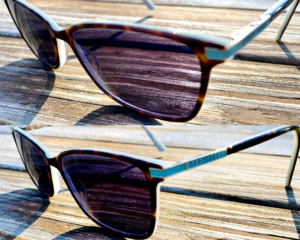6 Key Benefits of Transition Lenses

Remember how cool transitions lenses were? And then, how “uncool” they were?
Remember how you still wanted them but didn’t get them?
Remember how annoyed you were when the sun was bright and you didn’t have your sunglasses handy?
Remember the jealous rage you felt when you saw someone nearby wearing their transition lenses and how happy they were?
Okay, okay, maybe not quite. But if any of us have worn transition lenses before, and then went without them, that scenario should feel a little bit relatable.
Well, if you’ve gone without photochromic lenses for fear of being “uncool”, we’ve got good news:
Transition lenses are cool again!
But even if they weren’t, light adaptive lenses have something to offer everyone.
While photochromic, or light-adaptive lenses, known as Transition Lenses, have had a controversial past. People who wear the lenses love them and keep coming back for more.
Before your next appointment, consider these six benefits of photochromic lenses to help you know if your new lenses should be transitions.
1. Adaptive lenses protect your eye health
UV exposure damages our eyes. Macular degeneration, cataracts, and eyelid cancer are a few of the dangers that our eyes face from exposure to harmful UV light.
Wearing quality sunglasses while outdoors is the best way to prevent UV damage to your eyes. But wearing sunglasses might not be convenient for everyone. If you wear glasses, transitions might be a solution for you.
Transition lenses are designed to react to UV light. This makes them darken as soon as you step outside – protecting your eyes the moment your walk out into the world.
2. Transitions™ Gen 8 Lenses now change faster than ever
Photochromic lenses were first created by Daniel Stookey and his colleagues at Corning Glass Works Inc. in the 1960s. The original lenses, made from glass, faced serious challenges. Sometimes the lenses wouldn’t share the same level of darkness. On top of that, the time it took for them to transition, could last anywhere from ten minutes to one hour!
Thanks to the new technology behind Transitions™ Gen 8, your lenses will begin to darken the moment your walk outdoors.
After heading indoors, your lenses should be clear within only 2-3 minutes.

3. Transition lenses are convenient, stylish, and versatile
While no one can ever have too many pairs of glasses, keeping up with different pairs can be a burden. Especially if it’s for functionality alone.
Instead of trying to locate and switch between your regular glasses and sunglasses, photochromic lenses do the work for you. By transitioning seamlessly as needed throughout your busy day, transitions make themselves convenient.
Transition lenses also come in a variety of colors that you can choose from to find your perfect style!
4. Adaptive lenses help you see more clearly and reduce eye strain while outdoors
One of the biggest visual challenges we face today is eye strain. Bright sunny days at any time of year can result in squinting, which increases eye fatigue. When your lenses adjust to fit your environment, your eyes will feel more relaxed.
Pairing photochromic lenses with a premium non-glare coat will add even more protection against damage from the sun. Calming your eyes and allowing you to enjoy all your favorite outdoor activities!

5. Transition lenses are ready for every situation
Have you ever found yourself squinting on a cloudy day? Most of us assume that we won’t need sunglasses if it’s cloudy.
But the truth is, most harmful UV rays breakthrough cloud cover and cause damage.
Light adaptive lenses change based on their exposure to UV light, allowing them to work with your natural eyesight.
So even when the sun isn’t out, your transition lenses will block out the perfect amount of UV rays allowing your eyes to relax and see clearly.

6. Adaptive lenses help filter blue light
Transitions shine best while working outdoors. But since transition lenses react to UV light, they do offer some protection against blue light while indoors.
While transition lenses shouldn’t replace other means of blue-light filters, they’re worth considering.
With so many benefits, it’s hard to argue against the importance of photochromic lenses. Transition lenses really do have something to offer everyone!
Here at Oil City Eye Associates, we’re excited to offer a variety of Transition™ lenses.
At your next appointment, be sure to speak with one of our opticians about which type of photochromic lens is best for you!
Call us today so we can help you on your journey of finding your next favorite pair of eyeglasses!
